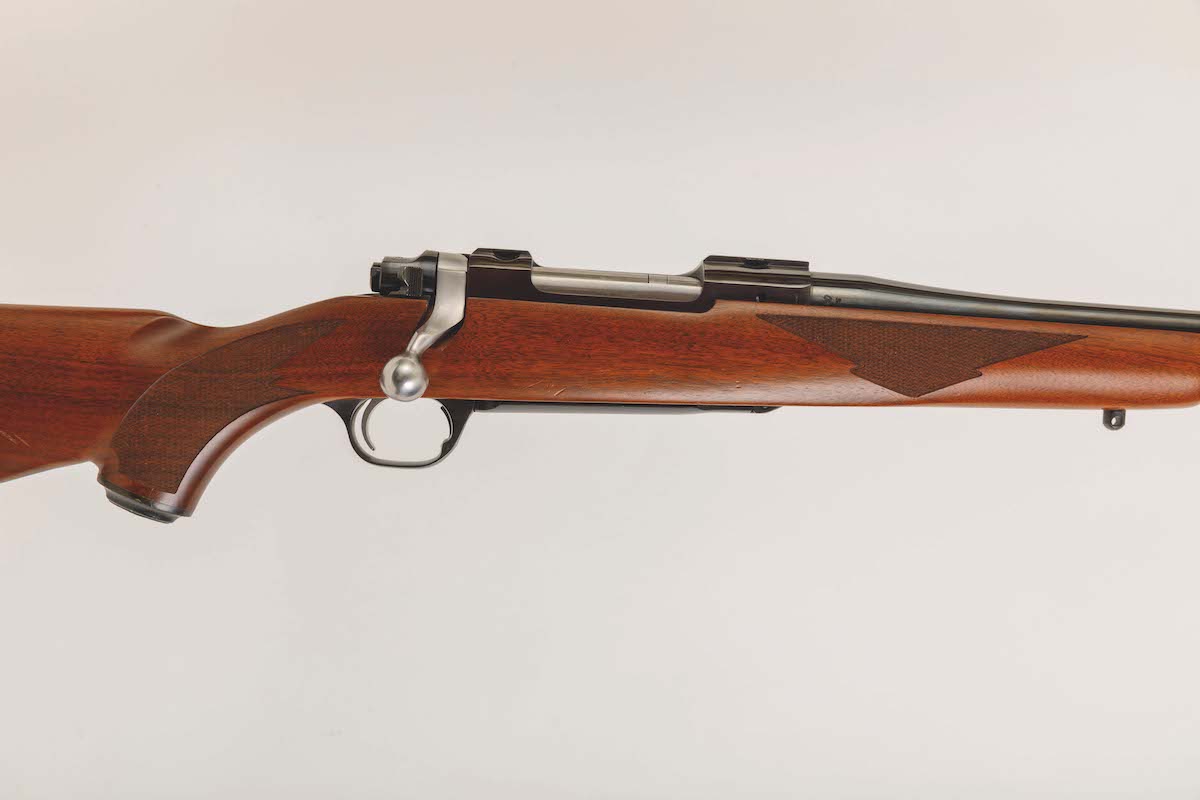Ruger M77 rifle review: a blast from the past
Charles Smith-Jones on the Ruger M77, a reliable, well-engineered, and reasonably priced gun for vermin control and more

Ruger M77 rifle review: a blast from the past
Manufacturer: Ruger
Ruger M77 tech specs
- Country of origin US
- In production Mk 1 1968 – 1992, Mk 2 and other updates from 1989 onwards
- Action Bolt
- Stock options Multiple
- Barrel length 22in–26in
- Magazine Floorplate, five rounds standard capacity or three rounds in Magnum calibres. Very recent M77s have a detachable magazine.
- Left-hand version Yes
- Weight (bare) Around 7lb dependent on stock material and barrel length; heavy calibres up to 10lb 4oz
- Available in calibres Multiple, including most popular centrefire pest control, deerstalking and dangerous game cartridges from .22-250 Remington up to .458 Lott
- Cost new £725 (American Predator model, .308 Win)
- Cost used From as little as £200 for an older model in clean, usable condition
The Ruger M77 has no pretensions towards the higher end of the market. It is a rugged and reliable tool that comes at a sensible price and will perform well under the most demanding of conditions. Many US shooters consider it to be the quintessential American deer rifle and users on this side of the Atlantic tend to agree about its virtues.
Anyone who is looking for an affordable, well-engineered and accurate rifle for vermin control, deer, or even larger game, would do well to consider one.

Both the M77’s action and the barrel are stainless
History of the Ruger M77
The Ruger M77 is a bolt-action rifle produced by Sturm, Ruger & Co based in Southport, Connecticut. Founded in 1949 and producing rifles, shotguns and pistols, the company is currently America’s largest firearms manufacturer and has a reputation for durable, reliable and no-nonsense products.
The M77 is typical of Ruger’s designs. First entering the market in 1968, it started life as a modernised Mauser 98, although the more industrially efficient investment casting method replaced the forged receiver of the Mauser. Additionally, the Mauser blade-type ejector was replaced with a simplified plunger-style design and a new two-position tang safety and trigger system were designed from scratch. It has been in continuous production ever since, undergoing changes to ensure that it still meets the demands of modern shooters.

The design of the stock has evolved
Tight and secure
Despite constant design modifications, one aspect that has not changed is the angled bolt-action screw, a novel innovation for its time. Traditional bolt-action rifles have a screw that secures the receiver at right angles to the stock; the M77 employs an angled screw that pulls the action downwards while drawing it to the rear, ensuring tight and secure bedding.
Early versions featured leaf rear and ramped front open sights, along with simple receivers drilled and tapped to accept separate scope mounts. But one of the earliest design changes introduced a proprietary scoped mount that was integral to the receiver.
The first major redesign came in 1991 when the M77 Mark II was introduced with substantial changes to the bolt, trigger and safety mechanism. Ruger went back to a Mauser-style fixed-blade ejector system, replacing the plunger ejector it had originally opted for. A three-position safety catch replaced the two-position one, allowing operation of the bolt with the safety applied and greatly enhancing safety while loading and unloading.
A version sometimes known as the Safari Magnum also became available, having a larger action that could accommodate bigger cartridges such as the .375 H&H and .416 Rigby.
A second significant redesign came in 2006 when Ruger renamed the rifle as the Hawkeye. The main improvements were to stock contouring and the trigger system but the design went largely unchanged. The new trigger unit was important as, in common with many rifles intended for a potentially litigious US market, the old one had something of a reputation for a heavy and dragging pull. The new LC6 trigger assembly proved to be both lighter and smoother, allowing for easier adjustment.

The three position safety allows the bolt to be operated with the safety applied
All weather
The original model came with wooden furniture but the Mark II introduced a Zytel injection-moulded stock and, coupled with a stainless barrel and action, was marketed at the M77 All Weather. It is now possible to come across any number of variations that include American walnut and laminated stock options. Barrels are fully bedded rather than free floating. (Read all our Ruger reviews here.)
The current Ruger catalogue reflects a shift in emphasis towards its American rifle series, though the Ruger M77 remains represented, albeit in a more limited selection of calibres. These latest models come with a rotary detachable magazine but their predecessors had only an internal magazine with a floorplate, which had to be top loaded.
Unloading by dropping the floorplate or cycling the action can be awkward, especially with wet or cold hands, and sometimes the cartridges end up on the ground. For this reason, the lack of a detachable magazine might be a deciding factor to some shooters considering this gun.
Verdict
Anyone who is looking for an affordable, well-engineered and accurate rifle for vermin control, deer, or even larger game, would do well to consider one








